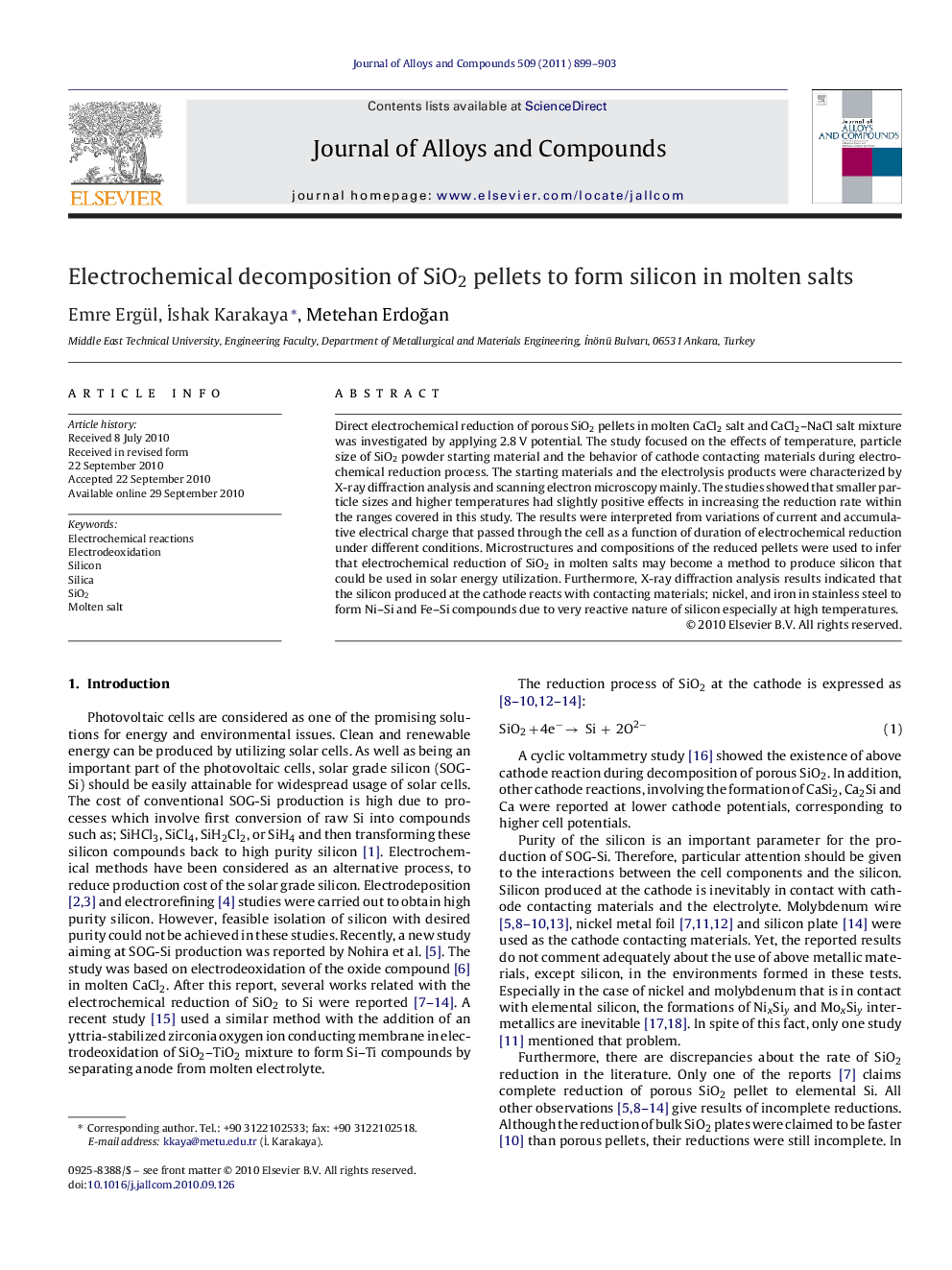| Article ID | Journal | Published Year | Pages | File Type |
|---|---|---|---|---|
| 1618844 | Journal of Alloys and Compounds | 2011 | 5 Pages |
Direct electrochemical reduction of porous SiO2 pellets in molten CaCl2 salt and CaCl2–NaCl salt mixture was investigated by applying 2.8 V potential. The study focused on the effects of temperature, particle size of SiO2 powder starting material and the behavior of cathode contacting materials during electrochemical reduction process. The starting materials and the electrolysis products were characterized by X-ray diffraction analysis and scanning electron microscopy mainly. The studies showed that smaller particle sizes and higher temperatures had slightly positive effects in increasing the reduction rate within the ranges covered in this study. The results were interpreted from variations of current and accumulative electrical charge that passed through the cell as a function of duration of electrochemical reduction under different conditions. Microstructures and compositions of the reduced pellets were used to infer that electrochemical reduction of SiO2 in molten salts may become a method to produce silicon that could be used in solar energy utilization. Furthermore, X-ray diffraction analysis results indicated that the silicon produced at the cathode reacts with contacting materials; nickel, and iron in stainless steel to form Ni–Si and Fe–Si compounds due to very reactive nature of silicon especially at high temperatures.
Research highlights▶ Increasing temperature or decreasing SiO2 particle size increased the reduction rate. ▶ Addition of NaCl to the electrolyte decreased the reduction rate. ▶ Complete reduction of SiO2 pellets was achieved after 16 h of electrolysis. ▶ The brown color of silicon may be the result of nanometer-scale crystallite size. ▶ Higher purity of Si may be obtained by advancement of cell component materials.
